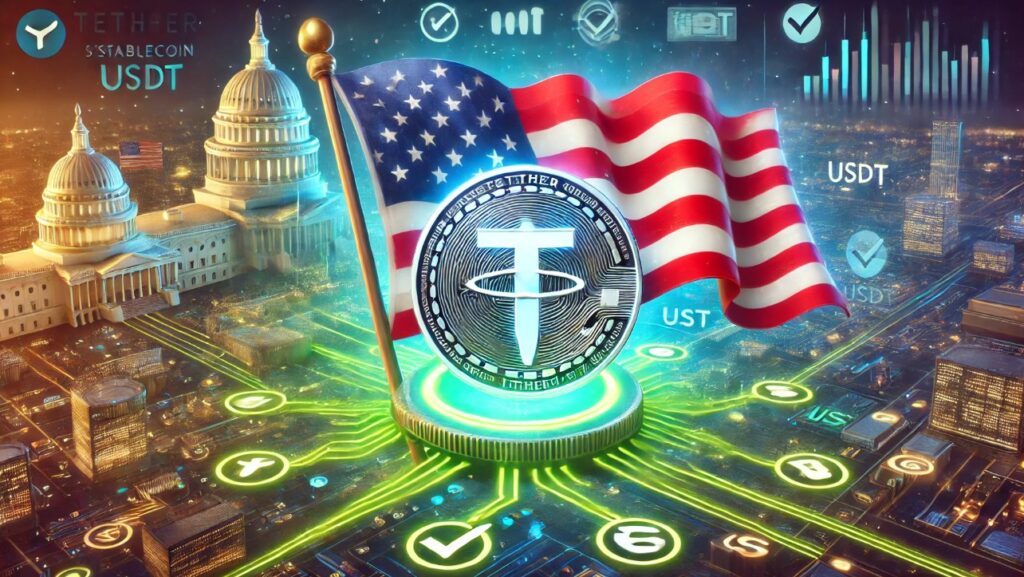As the United States navigates the evolving terrain of cryptocurrency regulations, key players in the crypto market, like Tether, are positioning themselves for potential expansions. This is particularly true as the current administration under President Trump explores new frameworks for digital assets, which could open up new possibilities for stablecoins. Tether, the issuer of the world’s leading stablecoin, USDT, is exploring the launch of a stablecoin designed exclusively for the US market. This move is seen as an adaptive strategy in response to the shifting regulatory landscape, underscored by optimism from Tether’s CEO, Paolo Ardoino, about the potential of stablecoins as vital financial instruments.
Exploring Tether’s Potential Move to the US Market Amid Shifting Regulations
The Drive for US Market Penetration
Paolo Ardoino recently shared insightful perspectives in a conversation with the Financial Times, highlighting Tether’s proactive engagement with US authorities concerning the evolving stablecoin regulations. This development underscores a significant acknowledgment by the White House of the role stablecoins can play in the financial ecosystem, fostering an environment conducive to Tether’s prospective launch of a US-centric digital currency.
Presently, Tether oversees an impressive circulation of $144 billion, dominating 70% of the stablecoin arena. Despite its widespread adoption, Tether restricts direct involvement with US-based clients, a stance that could be revised with the implementation of favorable regulatory guidelines. The current backdrop of US policies indicates a potential pivot towards positioning America as a leader in cryptocurrency innovation—a vision strongly advocated by President Trump. With forthcoming regulations anticipated by August, there is palpable urgency in the air for stakeholders within the industry.
Regulatory Developments and Their Implications
The regulatory climate for cryptocurrencies has seen a tangible shift, evidenced by the Securities and Exchange Commission (SEC) placing a halt on numerous legal actions that previously burdened the crypto landscape. This development, coupled with the SEC’s recent statement excluding stablecoins from the securities category, marks a significant departure from the previous administration’s stance, suggesting a more accommodating environment for digital assets.
According to the Financial Times, Ardoino’s eagerness to penetrate the US market aligns with these regulatory advancements. Should the new guidelines pave the way for competitive domestic stablecoins, Tether is prepared to establish an American-focused stablecoin capable of efficiently facilitating transactions.
The Growing Legislative Interest in Stablecoins
There is a clear legislative push in the US towards establishing a robust framework for stablecoins, a move that aligns with Ardoino’s aspirations. Jonathan Levin, a prominent figure and CEO of Chainalysis, emphasizes the necessity of a cohesive federal structure to enable widespread adoption among financial institutions and global enterprises.
In a sign of growing governmental support, several legislative measures have surfaced to bolster the stablecoin sector. Tether’s reported $13 billion profit in the previous year highlights the thriving interest in these digital assets despite broader market volatility. Additionally, Circle, the entity behind the USDC stablecoin, is progressing towards a public listing in the US, further demonstrating the sector’s potential.
FAQs
What are the potential benefits for Tether in launching a US-exclusive stablecoin?
By introducing a US-exclusive stablecoin, Tether could tap into the vast American financial market, aligning with new regulatory frameworks that promote healthy competition. This move could enhance Tether’s market presence and expand its user base, facilitating faster settlement processes and broadening adoption.
How does the SEC’s stance on stablecoins impact the market?
The SEC’s decision not to classify stablecoins as securities removes significant regulatory hurdles, encouraging innovation and expansion within the sector. This clarification could lead to increased confidence among investors and enterprises, ultimately driving growth and development in the stablecoin market.
Why is a federal framework necessary for stablecoin adoption?
A unified federal framework is crucial to ensure consistent standards and regulatory oversight, mitigating risks and fostering trust among users. This regulatory clarity is essential for financial institutions and businesses seeking to integrate stablecoins into their operations, paving the way for broader adoption and innovation.
Is the US poised to become a leading hub for cryptocurrency innovation?
With supportive policies and a focus on creating a conducive regulatory environment, the US is positioned to become a significant player in the global crypto market. By prioritizing the development and oversight of digital assets, the US can attract innovation and investment, solidifying its status as a hub for cryptocurrency advancement.

